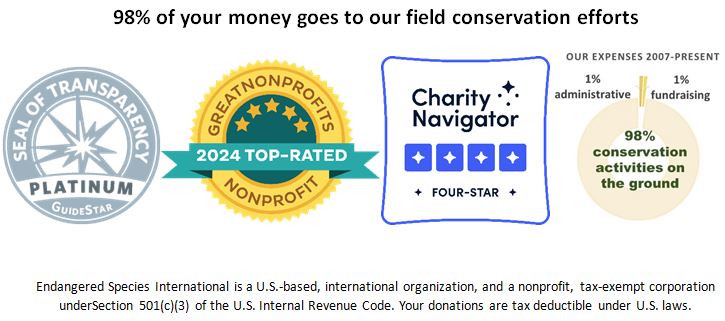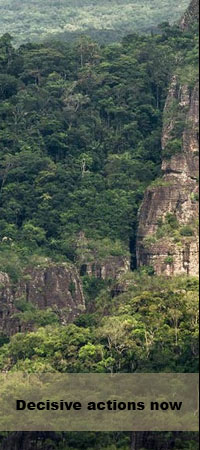|
Together to secure the remaining fraction of rare unprotected species sites before more land conversion occurs and without leaving a chance to create vital new protected areas.
Our decisive actions for the last unprotected sites
According to a new study (Frontiers in Science, July 2024),16,825 sites around the world are harboring rare and threatened species, covering around 164 million hectares or 1.22% of the Earth’s land surface that needs immediate protection. Many of those sites are within regions of the world where Endangered Species International (ESI) is currently working each day toincrease protection and prevent irreversible biodiversity loss.
The top five countries in the world with the highest number of nature conservation urgencies are the Philippines, Brazil, Indonesia, Madagascar, and Colombia, and together they account for 59% of all sites globally. Over 87% of all conservation urgencies occur in just 30 countries. ESI and its local partners focus on those countries where biodiversity and endangered species can be saved before they vanished forever.
There is an urgent need to prioritize the conservation of habitats of rare and threatened species as part of a larger global biodiversity strategy. ESI aims to conserve the last unprotected sites harboring rare, range-restricted, and threatened species that are a central part of the ambitious goals to protect at least 30% of the Earth’s surface by 2030.
Since 2008, ESI has been in the field in the most urgent places of the world to prevent the most likely and imminent extinctions by directly protecting last unprotected terrestrial and marine sites harboring irreplaceable biodiversity. ESI has already contributed to protect and restore large and small areas of critical natural sites for so many endangered animals like gorillas, elephants, and sharks. With no wasting resources (98% of our budget goes to the field to protect natural sites), together, we must accelerate our work before we loss those vital unprotected sites around the world. We must act fast before it is too late because we can’t reverse extinction and all the hurtful human actions.
We have demonstrated that safeguarding critical habitats is the most effective way to protect species and restore a healthy planet.
To accelerate the protection and restoration of the last critical unprotected sites around world with focus on the tropics (0.74% of land in the tropics), with your help, we will:
provide rights and titles to Indigenous Peoples and local communities because they are the best guardians of nature; conserve traditional lands; encourage and support effective government designation of new protected areas on federal, state lands and ocean sites; buy land or lease long-term of privately held lands to transform them as natural protected areas.
Preventing extinction is affordable and doable and together with your generous support, we can secure the last unprotected land and marine sites harboring irreplaceable biodiversity and wildlife.
Are the facts not bad enough for decisive actions?
Only 1/3 of the world's rainforests remain intact Most coral reefs may not survive the next 20 years. 37% of sharks, rays and coral species are in deep decline Wildlife populations have plunged by an insane 69% since 1970 63% of all amphibian species are in decline, as are 56% of mammal species and 53% of birds. Around 40 Sumatran Rhinos left in the wild. Declines precede extinction. The biomass of domestic cattle outweighs all warm-blooded animals There are 5.25 trillion pieces of plastic debris in the ocean

|











